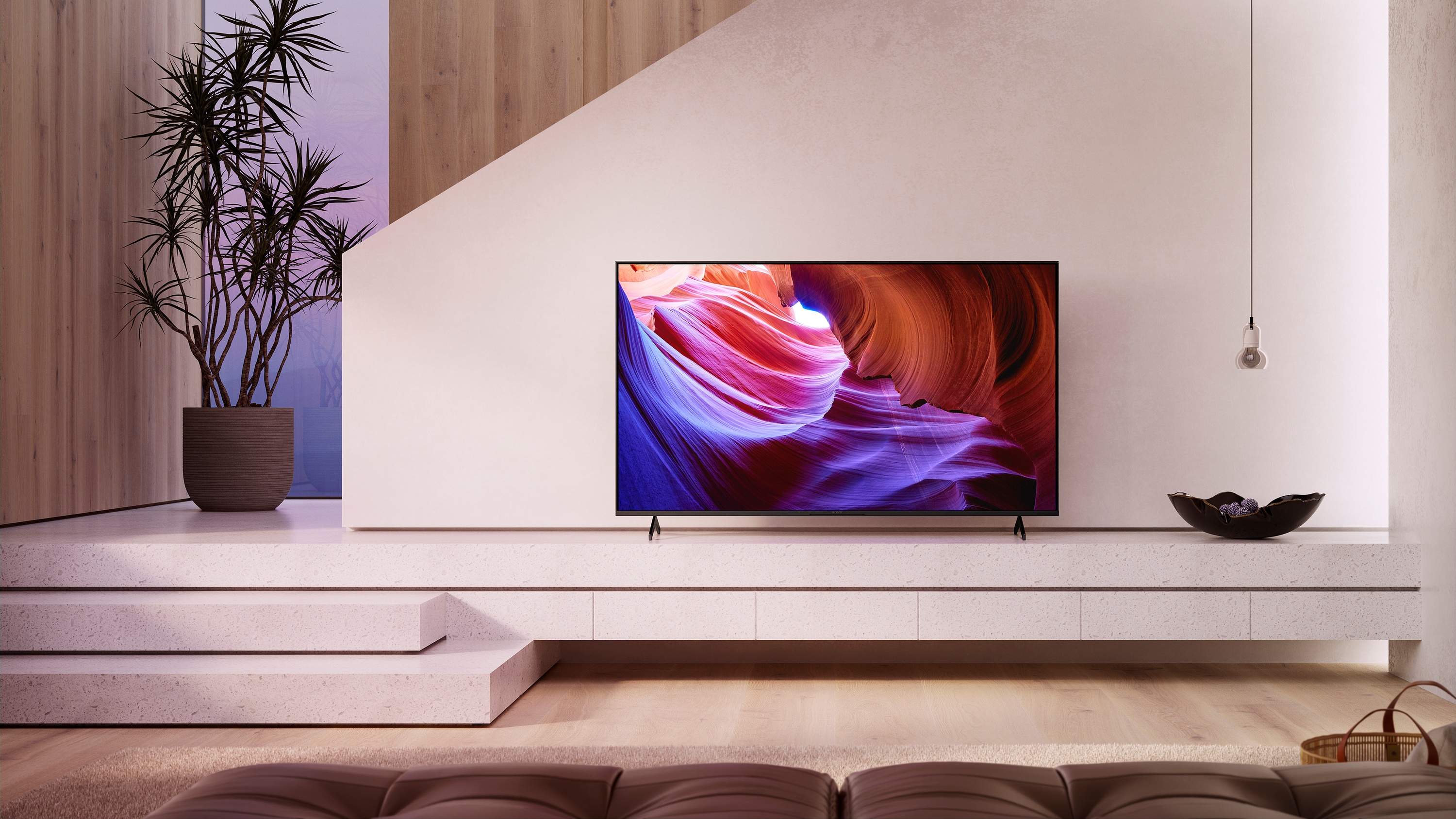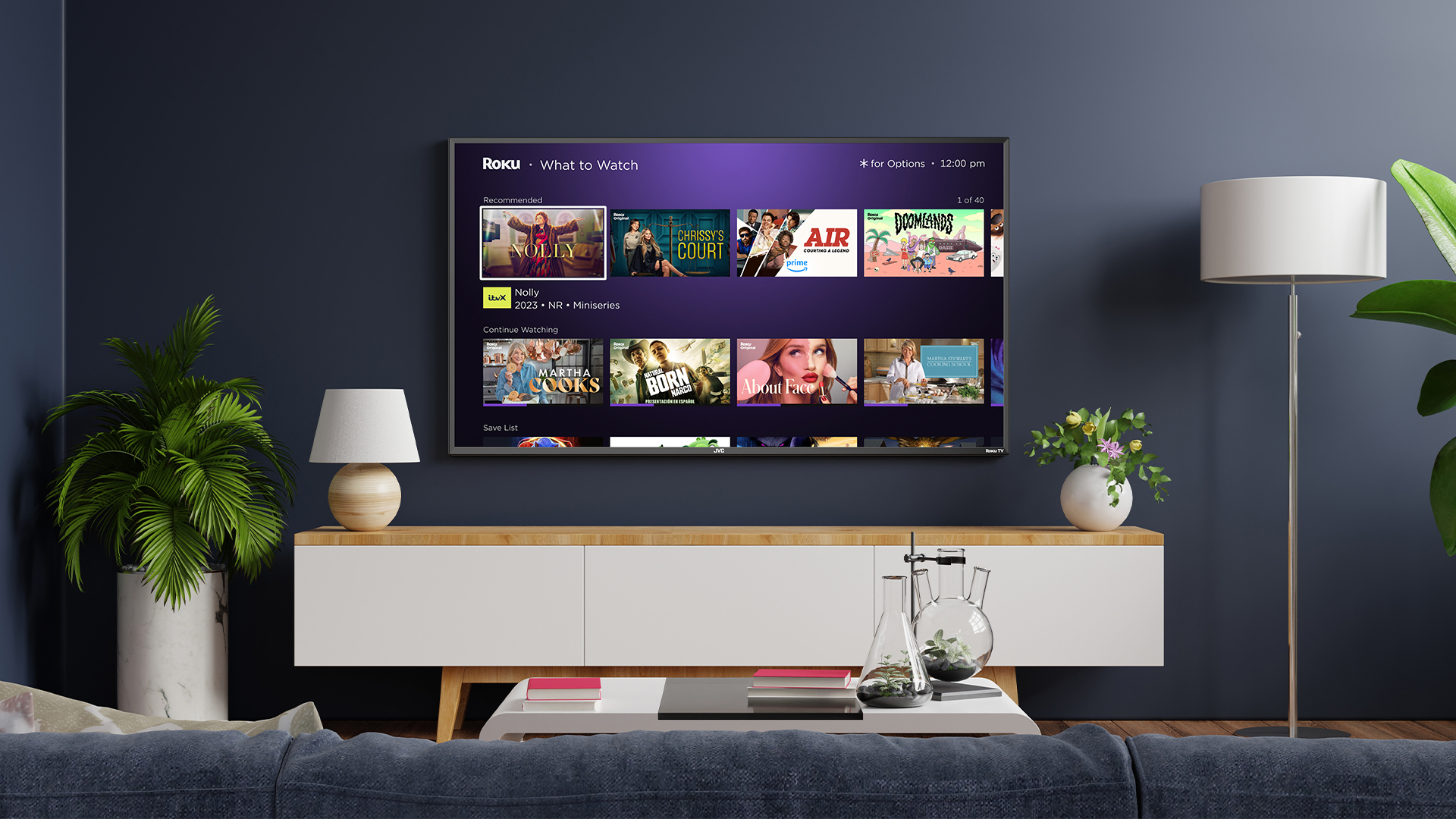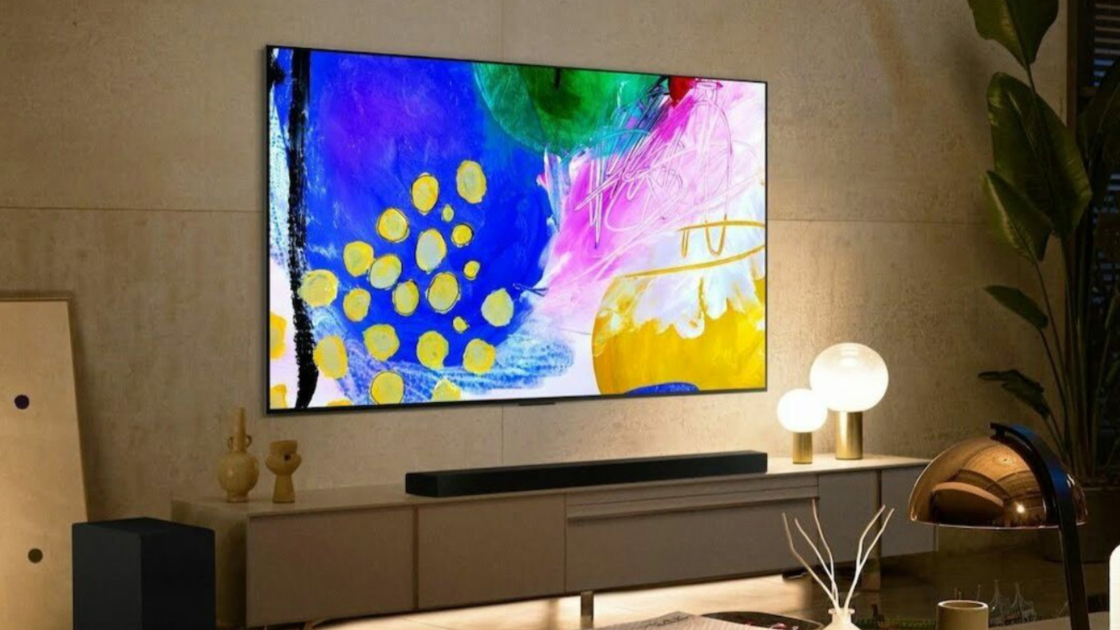Which TV screen size should you buy?
The ultimate TV screen size guide

This TV screen size guide aims to help you find the perfect panel for your space so that you get the ultimate immersive viewing experience.
Sure, you may have already worked through our best TV guide and picked the model for you, but with plenty of sizes available on most of those, you're still left with that final decision: 42 inches or 48? 55 inches or 65? And so forth.
While price may be a factor, with larger screens generally costing more, there are many considerations to take into account. Do you want the latest and greatest screen technology? Flagship TVs often come in limited sizes. How far away will you sit? Calculating the right viewing distance is important. Beyond having a TV in a room that is either too small so that it feels far away, or too large so it ends up owning the room, image quality can also affected by this.
And there is plenty more to consider too. Read on to find out all you need to know about TV screen size options...
What TV sizes are there?

What you should know first and foremost is what sizes are available to you. TVs have generally gotten bigger in recent years, with manufacturers offering more ranges in large sizes over 75 inches. While 10 years ago the most popular screen size in brands' ranges and people's homes was 32 inches, it's now between 48 and 55 inches.
When it comes to the ever-popular premium 4K OLED TVs, the smallest panel size you could get until recently was 55 inches. In the past few years that has extended down to 48 and then 42 inches.
You can expect a wider range of sizes when it comes to backlit TVs, whether QLED or LCD, but models smaller than 43 inches are almost always Full HD rather than 4K. 85 inches is the common 'large' screen size, though the odd 98-inch and 100-inch options are available too.
The smallest 8K TVs are 55 inches in size and the largest are 98 inches.
- Our pick of the best 40/42/43-inch TVs, best 55-inch TVs and best 65-inch TVs
What sizes are flagship TVs?
It's worth noting that if you want the best of the best when it comes to picture quality, features and design, you'll need to opt for a manufacturer's flagship – i.e. top-ranging – model.
Since a new line of TVs is initially sent out as a sales test for the manufacturer, they tend to limit the panel size options. For flagships, 55-inch screens are often the smallest options – that's where MLA and QD-OLED options begin, for example.
Features and screen technology are generally the same across sizes in a flagship TV range, though that isn't the case for all brands, models and panel types so it's worth keeping that in mind when you're shopping around, especially if you're after a large TV. Panasonic, for example, has launched two flagship models, the Z95A in 55 and 65 inches, and the Z93A in 77 inches – though the Z93A sports inferior panel technology.
Where to place your TV

It's important to think about where your TV is going to live when you welcome it into your space, and that of course means taking into consideration where you're going to be sitting.
If your seating is already locked in place and there is only one spot for the TV to go, you'll need to work from there. If your seating area is more flexible, you may have more options in terms of where the TV can live. In either case, there is a useful system to help you work out the ideal seating distance from your screen.
A useful sum is to measure the distance from your seat to the spot for the TV in inches, and then multiply that by 0.84. This should give you a rough idea of the television size that will suit your arrangement. For example, if you're sitting eight feet (96 inches / 2.5 metres) back from the TV then it will work out to an 80-inch screen. That's very large, so use this as a top-end figure and subtract ten inches or so for a perfectly good setup. We have done the measurements for you in our ideal viewing distances for 4K TVs.
Another consideration is the field of view. Sit further to one side or the other and the image brightness and contrast can degrade for QLED and LED panels, which have more narrow ideal viewing angles. This is less of an issue for OLEDs, which are very consistent from almost any angle.
How will your TV stand?

How your TV is going to be held upright is also worth considering. If you have a tabletop space then the TV's included legs will offer a straightforward way to get you up and running relatively easily. Just take into account that some TVs have feet at the ends of their screens (some can be moved to a more central position, others can't) and will require a particularly wide tabletop.
But if you want to wall mount your TV, you'll need to consider size and, specifically, weight. If your TV includes a wall mount, perfect – use that and make sure your wall is up to the task! If it doesn't and you need to get one, make sure you buy one that's rated for the size and weight of your TV. Just remember you'll pay more for larger mounts and extras like the ability to tilt or angle the TV as needed.
Is a bigger TV better?
Sure, at the movies that massive screen makes the cinema experience more immersive, but go too big at home and it can make your space look crowded and, worst, the TV uncomfortable to focus on. So is bigger really better?
In the past, going bigger often meant losing image quality, but nowadays you don't typically have to sacrifice much quality. Even at 85 inches, the best 4K panels are crystal clear and detailed, while 8K panels fill those size screens even more impressively.
We'd generally advise going for the biggest TV you can afford and fit comfortably in your room, though remember that while you can get huge screens for not all that much money nowadays, you might be better served spending the same money for a better quality screen that is slightly smaller. Unless you (and your room) are screaming out for a 75- or 85-incher, you'll probably be better served by a 65-inch OLED than by a bigger but similarly priced LCD.
In summary, if you have a big enough space and budget, going bigger is better for immersion. But take into consideration the viewing distance, angles and screen type before you pick the TV size to suit your space.

If you're doing this level of research into your next TV, it probably means you're passionate about having a really good movie and TV show viewing experience at home. In that case, I personally recommend going for the largest TV you can afford and accommodate without sacrificing too much quality. There's no hard and fast rule to this and I can't list every possibly conundrum but, for example, if the choice was between a 77-inch mid-range OLED (such as an LG C3 or Sony A80L) and a 65-inch flagship model (such as an LG G3 or Sony A95L), I'd personally opt for the bigger TV. I wouldn't, though, drop from OLED to a backlit TV simply to get the next size up.
Of course, there are endless personal circumstances to consider, from room size and budget to (perhaps most crucially) whether your partner shares your passion for home cinema. We can't possibly account for all of those, but I will say that I've not met anyone who wished they had bought a smaller TV and I've met plenty who wished they'd gone bigger.
MORE:
OLED vs QLED: which is the best TV technology?
LG 2024 OLED TV range: everything you need to know
Also check out our expert pick of the best TVs you can buy
And be sure to use the screen size calculator guide
TV model numbers explained: how to identify LG, Sony, Samsung and other TVs
Get the What Hi-Fi? Newsletter
The latest hi-fi, home cinema and tech news, reviews, buying advice and deals, direct to your inbox.
